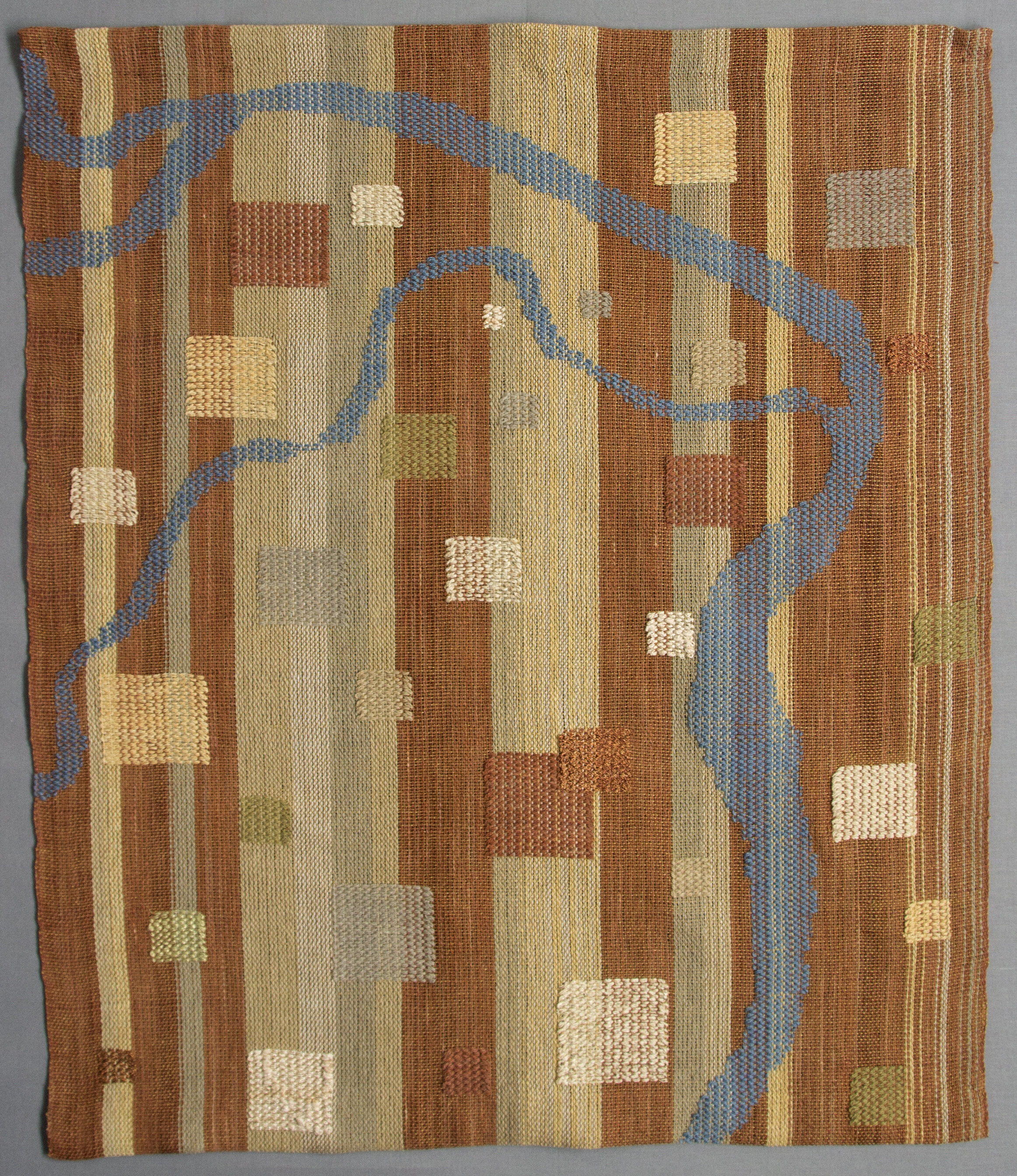Since blogging a few months ago about reclaiming weaving, I’ve been thinking about where to find my weaving impulses. I’ve tried a few things lately that interested me at the beginning, but then my interest wandered. I’ve flipped through books, Instagram feeds – nothing filled me with fire.
Then I happened upon an Instagram post featuring the tapestry of Finnish artist Soile Hovila and I felt an excitement build. Her work isn’t the traditional tapestry that I was taught with the warp threads covered by weft. Her warp threads were exposed, and it felt transgressive! Why? We get these rules set down by some mysterious “they.” Then an artist challenges them quietly and reminds us that rules are a temporary thing and always subject to change. Hovila’s work shows how she sees into the world with washes of color and light. The movement and quiet are combined skillfully and transport the viewer into her world and the way she sees.
Her act of exposing warp and weft supports the visual imagery of her work and the importance of it being a textile. There is nothing hidden. It isn’t a textile trying to be anything but itself. The exposed warp isn’t distracting or lack of skill on her part, but a carefully considered decision.
If I had made it to Finland in the spring, I would have seen her work on exhibition at The Craft Museum of Finland. That smarts a little, but for now I’ll have to view her work online. She has a lovely Instagram feed and shares her progress with the tapestry on her loom currently.
Where do you find your inspiration, where do you find your way through times when you feel stuck? How do you ask for help when you feel lost? Sometimes I think that the harder I chase my desire to find my place back at the loom, the more elusive it will become.
So how to solve this little problem? I work, I pay attention when something inside me perks up, surround myself other artists working away in their studios (even only if virtually for now), I look into the world, I write, I try to explore and push myself a little more each day. I know I will find it, I trust that, but it isn’t always on my desired timeline. I have plenty to work on, my task list grows each week, so I show up each day willing to get to work.
I have taken a few things off the loom recently. I did a sample with torn strips of map printed silk organza with some left over natural linen from my first transparency sample. I was curious how the silk “rags’ would look and I’m intrigued by the result. I have a book about Finnish American Rag Rugs to dig into for research and maybe that will be informative for where to go with this sample.
“rag” sample with printed silk organza
“rag” sample with printed silk organza - in window for light to pass through
Another piece off the loom is this small 7” x 7” transparency sample. The base cloth is 12/1 linen. I was cautioned that I might need to be gentle with it and prep it with some sizing. Of course, that means I dyed some and threw it on the loom without any sort of fuss. I wanted to see how much harassment it would take. It held up well and the loom waste looked a little fuzzy toward the end from friction. I’m happy with the fabric it made, and I’m interested in the imagery. I’m interested in the areas of open warp and weft. How that might impact the visual message of the piece? I have no idea where this is going, but I’m curious enough to keep working to see if a path emerges. I love the idea of using a traditional Finnish way of weaving and seeing if it has a place in my work. plan to do some embroidery on the cloth to push it a little more.
transparency woven sample




